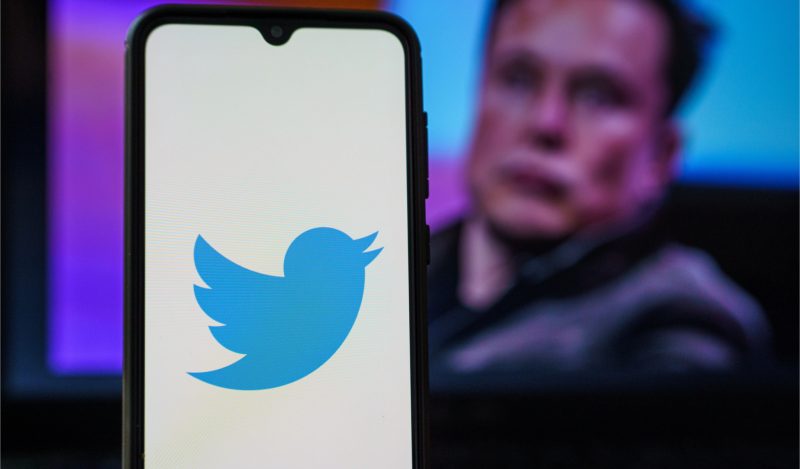Brownstone Institute
Musk Declines to Save Twitter from Itself

From the Brownstone Institute
The question is finally settled: Elon Musk has declined to buy Twitter. His initial offer of $44 billion was contingent on truth and transparency of the company’s corporate filings.
It’s no different from the contract you put on a house: the inspections still remain. If the foundation is cracked – or, worse, if the owners block the inspectors from even looking into the question – the deal is off.
The letter from Musk’s attorney makes it absolutely and painfully clear that Twitter did not cooperate.
“Twitter has not provided information that Mr. Musk has requested for nearly two months notwithstanding his repeated, detailed clarifications intended to simplify Twitter’s identification, collection, and disclosure of the most relevant information sought in Mr. Musk’s original requests.”
There are many issues here but the central one concerns the mDAU or monetizable daily active users. They claim 217 million, nearly half of whom log on daily, and only 5% of whom are bots. To manage them, Twitter has 7,500 employees who earn an average salary of $121,000 per year.
Honestly, if you claim to have a magic machine that displays random thoughts from anyone that somehow converts people’s passing attention into profit – and employ that many people at such high salaries who make it all happen – you had better be sure that you can generate credible numbers to prove it.
Twitter never did.
Maybe the foundation is cracked or maybe it is not. But when the owners don’t let you verify, there is a reason to walk away.
It would be nice to know Musk’s real thoughts. I suspect that Elon looked more closely at this vaunted ruling-class time waster and found vast puffery, low profitability, wildly inflated numbers concerning usage, and a vicious and expensive staff that hates his guts, while opposing free speech and the values of most regular American people.
Why would he bother?
It’s all strange timing for the company suddenly to announce massive cuts in its payroll, starting with the team dedicated to job recruitment. That would appear to mean the HR staff, which is undoubtedly huge, but a net drain on any company seeking profitability. Maybe this move was made in response to Musk — let’s clean house before the new owner takes over — or maybe it was made necessary by poor financials.
In either case, Musk might have come to believe that the entire company is a dog he doesn’t want to adopt.
Meanwhile, Twitter seems to have settled a lawsuit with Alex Berenson, an early Covid-policy critic who was later banned for posting…facts. The terms of the settlement are secret but they did result in his reinstatement. The same day, however, Twitter went on an aggressive purge of other accounts that dared to post basic facts particularly about covid and vaccine effectiveness.
Again, why would Musk even bother? There are plenty of other projects out there that merit his attention that could actually make money. Plus, he will be spared the ultimate annoyance of dealing with thousands of entitled and overpaid staffers who have drunk deeply from the woke ideological wells of poststructuralist Ivy-League theorizing.
He might dream of firing 90 percent of them — I dream the same — but what does that achieve?
What is the future of this company and others like them that have lived off enthusiasm, cheap credit, and their influencer status, while obscuring the underlying data that matters most? We know that Facebook, YouTube, and many others have already been caught making wild exaggerations about their mDAUs. It makes sense that Twitter is guilty of the same.
What does this mean for the company? We are seeing the unfolding of a very strange inflationary recession that combines low unemployment, declining purchasing power, falling demand for goods and services, low investor confidence, plus a growing financial squeeze that is raising serious questions about whether the basic economic model of high-profile companies like Twitter is sustainable.
George Gilder has foreseen the end of Google, one company the name of which he deploys as a stand-in for a slew of high fliers that dominate Big Tech today. Precisely how they would bite the dust has always been a question. It would be the height of irony to see them all die the death from the very forces that gave them such high profitability in 2020 and 2021: the pandemic response that conscripted their user base from the real world into the laptop life.
And with that comes a more fundamental question: just how vulnerable is this overclass to being euthanized by economic fundamentals?
For example, with the managerial class trying to get everyone back at the office, the overclass of lazy and overpaid staffers is resisting with all the ferocity one would expect from such an entitled proletariat. They simply won’t come back. They prefer the pajama life. It’s more comfortable. It’s also safer because by not showing up to the office, one can more easily hide from managerial oversight.
Right now office occupancy in major cities is at a mere 45% of what it was before the pandemic response. To be sure, many of these people have tried coming back. They fight the traffic. They ride the dangerous subways. They pay a high price for gas. Then they pay to park. Then eat bad food for lunch. And what do they do at the office? The same exact thing they would otherwise be doing at home. They Slack back and forth to other employees.
Doesn’t matter if the interlocutor is 5 feet away or 500 miles away. It’s all the same anyway.
The main reason for coming back to the office is to socialize with fellow employees. But that’s not actually doing work, is it? So that’s a problem. The great myth that having everyone hang out together in fishbowl rooms is going to lead to some kind of synergistic brainstorming has been exposed as another lie promoted by bogus management books one picks up in the airport.
Therefore, employees are coming up with any excuse to stay away. The best one — “I’ve been exposed to Covid so I’m in quarantine” — is getting stale. The high price of gasoline might be next on the list. Regardless, getting people back to the office seems ill-fated, which raises serious questions about what happens to these skyscrapers designed for a pre-2020 world?
We talk these days a lot about the labor shortage and the low unemployment rate. Can we get a bit of honesty here? The shortages are for jobs that many people don’t want. They are in the service industries, hospitality, the physical world, the work that actually requires work and real skills. When you are waving a fancy degree and believe that six figures is your birthright, you won’t take these jobs. That’s why there’s a shortage of workers.
In other words, we need people to fix cars, deliver goods from ports to stores, flip the rooms in hotels, make the omelets, and put up drywall in new houses. Those require skills and actually moving one’s body, which is anathema to the under-40 demographic that studied anthropology and the history of social oppression of everyone during the four-year, debt-financed vacation we call college.
Where there is a surplus is in the puffed-up sector of bullcorn jobs that require about 20 total minutes of engaged time per day. Those are the jobs that everyone wants, but how sustainable are they really during an inflationary recession?
Elon seems to get this. His companies do real things, not fake things. He probably intuits that most of these companies need massive restructuring, both in personnel and in world outlook.
A prediction: there are hard times ahead for the corporate laptoppers as these companies are forced either to become profitable or go bankrupt. And this will lead to a massive crisis and demoralization of an entire generation that has been taught that anyone with the right credentials and connections can get rich forever without doing a lick of real work.
Decades of debt financing have created a spoiled overclass in America that has been taught to hate capitalism and also believe they and their friends can forever earn a high-income stream off the fruits of that system. There could be a rude awakening and it could come sooner rather than later. They wanted a great reset and they are going to get it good and hard.
Now Twitter faces a serious problem. Who is the next buyer and why would this party be any less scrupulous? Also maybe investors should also be a bit more critically minded too.
Brownstone Institute
Bizarre Decisions about Nicotine Pouches Lead to the Wrong Products on Shelves

From the Brownstone Institute
A walk through a dozen convenience stores in Montgomery County, Pennsylvania, says a lot about how US nicotine policy actually works. Only about one in eight nicotine-pouch products for sale is legal. The rest are unauthorized—but they’re not all the same. Some are brightly branded, with uncertain ingredients, not approved by any Western regulator, and clearly aimed at impulse buyers. Others—like Sweden’s NOAT—are the opposite: muted, well-made, adult-oriented, and already approved for sale in Europe.
Yet in the United States, NOAT has been told to stop selling. In September 2025, the Food and Drug Administration (FDA) issued the company a warning letter for offering nicotine pouches without marketing authorization. That might make sense if the products were dangerous, but they appear to be among the safest on the market: mild flavors, low nicotine levels, and recyclable paper packaging. In Europe, regulators consider them acceptable. In America, they’re banned. The decision looks, at best, strange—and possibly arbitrary.
What the Market Shows
My October 2025 audit was straightforward. I visited twelve stores and recorded every distinct pouch product visible for sale at the counter. If the item matched one of the twenty ZYN products that the FDA authorized in January, it was counted as legal. Everything else was counted as illegal.
Two of the stores told me they had recently received FDA letters and had already removed most illegal stock. The other ten stores were still dominated by unauthorized products—more than 93 percent of what was on display. Across all twelve locations, about 12 percent of products were legal ZYN, and about 88 percent were not.
The illegal share wasn’t uniform. Many of the unauthorized products were clearly high-nicotine imports with flashy names like Loop, Velo, and Zimo. These products may be fine, but some are probably high in contaminants, and a few often with very high nicotine levels. Others were subdued, plainly meant for adult users. NOAT was a good example of that second group: simple packaging, oat-based filler, restrained flavoring, and branding that makes no effort to look “cool.” It’s the kind of product any regulator serious about harm reduction would welcome.
Enforcement Works
To the FDA’s credit, enforcement does make a difference. The two stores that received official letters quickly pulled their illegal stock. That mirrors the agency’s broader efforts this year: new import alerts to detain unauthorized tobacco products at the border (see also Import Alert 98-06), and hundreds of warning letters to retailers, importers, and distributors.
But effective enforcement can’t solve a supply problem. The list of legal nicotine-pouch products is still extremely short—only a narrow range of ZYN items. Adults who want more variety, or stores that want to meet that demand, inevitably turn to gray-market suppliers. The more limited the legal catalog, the more the illegal market thrives.
Why the NOAT Decision Appears Bizarre
The FDA’s own actions make the situation hard to explain. In January 2025, it authorized twenty ZYN products after finding that they contained far fewer harmful chemicals than cigarettes and could help adult smokers switch. That was progress. But nine months later, the FDA has approved nothing else—while sending a warning letter to NOAT, arguably the least youth-oriented pouch line in the world.
The outcome is bad for legal sellers and public health. ZYN is legal; a handful of clearly risky, high-nicotine imports continue to circulate; and a mild, adult-market brand that meets European safety and labeling rules is banned. Officially, NOAT’s problem is procedural—it lacks a marketing order. But in practical terms, the FDA is punishing the very design choices it claims to value: simplicity, low appeal to minors, and clean ingredients.
This approach also ignores the differences in actual risk. Studies consistently show that nicotine pouches have far fewer toxins than cigarettes and far less variability than many vapes. The biggest pouch concerns are uneven nicotine levels and occasional traces of tobacco-specific nitrosamines, depending on manufacturing quality. The serious contamination issues—heavy metals and inconsistent dosage—belong mostly to disposable vapes, particularly the flood of unregulated imports from China. Treating all “unauthorized” products as equally bad blurs those distinctions and undermines proportional enforcement.
A Better Balance: Enforce Upstream, Widen the Legal Path
My small Montgomery County survey suggests a simple formula for improvement.
First, keep enforcement targeted and focused on suppliers, not just clerks. Warning letters clearly change behavior at the store level, but the biggest impact will come from auditing distributors and importers, and stopping bad shipments before they reach retail shelves.
Second, make compliance easy. A single-page list of authorized nicotine-pouch products—currently the twenty approved ZYN items—should be posted in every store and attached to distributor invoices. Point-of-sale systems can block barcodes for anything not on the list, and retailers could affirm, once a year, that they stock only approved items.
Third, widen the legal lane. The FDA launched a pilot program in September 2025 to speed review of new pouch applications. That program should spell out exactly what evidence is needed—chemical data, toxicology, nicotine release rates, and behavioral studies—and make timely decisions. If products like NOAT meet those standards, they should be authorized quickly. Legal competition among adult-oriented brands will crowd out the sketchy imports far faster than enforcement alone.
The Bottom Line
Enforcement matters, and the data show it works—where it happens. But the legal market is too narrow to protect consumers or encourage innovation. The current regime leaves a few ZYN products as lonely legal islands in a sea of gray-market pouches that range from sensible to reckless.
The FDA’s treatment of NOAT stands out as a case study in inconsistency: a quiet, adult-focused brand approved in Europe yet effectively banned in the US, while flashier and riskier options continue to slip through. That’s not a public-health victory; it’s a missed opportunity.
If the goal is to help adult smokers move to lower-risk products while keeping youth use low, the path forward is clear: enforce smartly, make compliance easy, and give good products a fair shot. Right now, we’re doing the first part well—but failing at the second and third. It’s time to fix that.
Addictions
The War on Commonsense Nicotine Regulation

From the Brownstone Institute
Cigarettes kill nearly half a million Americans each year. Everyone knows it, including the Food and Drug Administration. Yet while the most lethal nicotine product remains on sale in every gas station, the FDA continues to block or delay far safer alternatives.
Nicotine pouches—small, smokeless packets tucked under the lip—deliver nicotine without burning tobacco. They eliminate the tar, carbon monoxide, and carcinogens that make cigarettes so deadly. The logic of harm reduction couldn’t be clearer: if smokers can get nicotine without smoke, millions of lives could be saved.
Sweden has already proven the point. Through widespread use of snus and nicotine pouches, the country has cut daily smoking to about 5 percent, the lowest rate in Europe. Lung-cancer deaths are less than half the continental average. This “Swedish Experience” shows that when adults are given safer options, they switch voluntarily—no prohibition required.
In the United States, however, the FDA’s tobacco division has turned this logic on its head. Since Congress gave it sweeping authority in 2009, the agency has demanded that every new product undergo a Premarket Tobacco Product Application, or PMTA, proving it is “appropriate for the protection of public health.” That sounds reasonable until you see how the process works.
Manufacturers must spend millions on speculative modeling about how their products might affect every segment of society—smokers, nonsmokers, youth, and future generations—before they can even reach the market. Unsurprisingly, almost all PMTAs have been denied or shelved. Reduced-risk products sit in limbo while Marlboros and Newports remain untouched.
Only this January did the agency relent slightly, authorizing 20 ZYN nicotine-pouch products made by Swedish Match, now owned by Philip Morris. The FDA admitted the obvious: “The data show that these specific products are appropriate for the protection of public health.” The toxic-chemical levels were far lower than in cigarettes, and adult smokers were more likely to switch than teens were to start.
The decision should have been a turning point. Instead, it exposed the double standard. Other pouch makers—especially smaller firms from Sweden and the US, such as NOAT—remain locked out of the legal market even when their products meet the same technical standards.
The FDA’s inaction has created a black market dominated by unregulated imports, many from China. According to my own research, roughly 85 percent of pouches now sold in convenience stores are technically illegal.
The agency claims that this heavy-handed approach protects kids. But youth pouch use in the US remains very low—about 1.5 percent of high-school students according to the latest National Youth Tobacco Survey—while nearly 30 million American adults still smoke. Denying safer products to millions of addicted adults because a tiny fraction of teens might experiment is the opposite of public-health logic.
There’s a better path. The FDA should base its decisions on science, not fear. If a product dramatically reduces exposure to harmful chemicals, meets strict packaging and marketing standards, and enforces Tobacco 21 age verification, it should be allowed on the market. Population-level effects can be monitored afterward through real-world data on switching and youth use. That’s how drug and vaccine regulation already works.
Sweden’s evidence shows the results of a pragmatic approach: a near-smoke-free society achieved through consumer choice, not coercion. The FDA’s own approval of ZYN proves that such products can meet its legal standard for protecting public health. The next step is consistency—apply the same rules to everyone.
Combustion, not nicotine, is the killer. Until the FDA acts on that simple truth, it will keep protecting the cigarette industry it was supposed to regulate.
-

 Alberta2 hours ago
Alberta2 hours agoFrom Underdog to Top Broodmare
-

 Energy24 hours ago
Energy24 hours agoPoilievre says West Coast Pipeline MOU is no guarantee
-

 Energy23 hours ago
Energy23 hours agoWill the New West Coast Pipeline MoU Lead to Results? Almost Certainly Not According to AI
-

 Alberta1 day ago
Alberta1 day agoWest Coast Pipeline MOU: A good first step, but project dead on arrival without Eby’s assent
-

 Carbon Tax1 day ago
Carbon Tax1 day agoCanadian energy policies undermine a century of North American integration
-

 Alberta22 hours ago
Alberta22 hours agoCarney forces Alberta to pay a steep price for the West Coast Pipeline MOU
-

 Alberta1 day ago
Alberta1 day agoAlberta and Ottawa ink landmark energy agreement
-

 Crime2 days ago
Crime2 days agoFBI Seizes $13-Million Mercedes Unicorn From Ryan Wedding’s Narco Network







